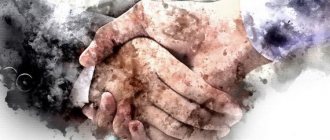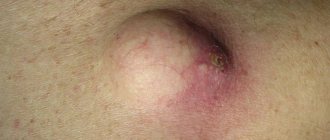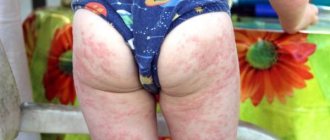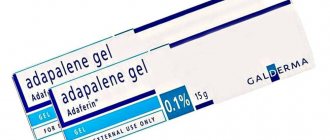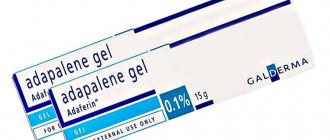What happens when you look in the mirror at 18? Having critically examined your reflection, you apply mascara to your eyelashes and remain absolutely satisfied, in a great mood. However, at 25 you have to put in a little more effort, at 30 much more, and then even more at 35...
Time, for each of us, first moves slowly, then runs, and then rapidly increases speed, and a series of events flashes before our eyes: joyful, sad, amazing, everyday, successful and not so successful.
At some point, you begin to seem to yourself like a squirrel in a wheel or a person whose coat is slammed by the door of a moving car and, in order not to get hit by the wheels, you are forced to quickly run, increasing your speed. Alone with yourself, you understand that in your soul you are still 18, well, at most 25, and in the mirror the face of a stranger is reflected, who is already 40... There are already strings of wrinkles around the eyes and on the forehead, the skin has changed color and does not look so smooth, the features have sharpened. The most important thing is that the thought that I am now successful, have a lot of experience, knowledge, and skills does not calm me down at all!
Realizing your age first brings you sadness, but after a few days you make a decision (as usual) to fight and achieve your goal. The goal is simple: to look young, attractive and well-groomed. You need a plan and tools. First, figure out: what exactly is happening to me and how to deal with it effectively with minimal investment of time, effort and money?
To determine the tactics of facial rejuvenation and who to contact first - a cosmetologist or a plastic surgeon, it is necessary to find out what type of aging the face is susceptible to. That is, the first step is to make a correct diagnosis.
So: today, the most popular classification is I.I. Kolgunenko, proposed back in 1974. This author found general patterns of age-related changes and identified six types of aging, five of them classified as early.
"Tired" type of aging
The first age-related changes appear on the face. In the morning, after a full rest, the face looks fresh, and in the evening it looks sad and tired: bags and dark circles appear under the eyes, the nasolacrimal and nasolabial furrows begin to appear, the corners of the mouth droop sadly. The shape of the face remains unchanged, although its youthful roundness has already disappeared.
The “tired” type of aging is more pronounced in women of normal or thin build, middle age with an oval or diamond-shaped face, with normal skin in youth and moderately dry skin in middle age, with average expression of the subcutaneous fat and muscle layer.
This type of aging is characterized by dryness, decreased skin turgor and elasticity. Dull, uneven, grayish complexion, swelling and pastiness are caused by impaired lymphatic drainage and blood supply, which lead to tissue hypoxia. Initial lipoatrophy (decreased thickness of the subcutaneous fat layer) and decreased tone of facial muscles leads to a decrease in the fullness of the soft tissues of the face. Age-related tissue decline has already begun, but permanent wrinkles have not yet formed.
Rejuvenation techniques for the “tired” type of aging
The “tired” of age-related changes responds gratefully to any care, so various cosmetic procedures come first in terms of efficiency and rationality, with plastic surgery joining later.
1) Cosmetic procedures aimed at improving microcirculation, improving the tone of facial muscles, stimulating the production of collagen, elastin, hyaluronic acid and restoring facial volumes:
- Competent skin care for the face and neck at home
- A visit to a cosmetologist for professional skin care for the face and neck, which will include:
- non-invasive methods (facial cleansing, massage, moisturizing, nourishing and modeling masks, superficial chemical peeling of the skin);
- physiotherapeutic methods (myostimulation, microcurrents and ultrasound therapy);
- invasive methods (biorevitalization, bioreinforcement and contouring with hyaluronic acid gels, mesotherapy with homeopathic and vitamin cocktails).
2) Surgical technique
- contour plastic surgery of the face using one’s own adipose tissue – lipofilling – to improve the quality of the skin and restore facial volumes lost due to lipoatrophy.
What makes us perceive a face as old or young?
By looking at someone's face, we know exactly whether they are young, elderly or old. How do we define this? Let's try to break stereotypes.
It is believed that an old face is distinguished by wrinkles and furrows, colorless, thin skin with visible blood vessels. However, if you only consider these features, what do you think about the faces in the pictures below?
The first woman has pale skin, the second has visible vascular lesions. And yet there is no doubt that the faces in the photo are not old. Skin discoloration and visible capillaries do not always indicate that we are dealing with an old face!
Dilated vessels on the face
On the other hand, it is believed that a young face is a face without wrinkles. Look at the picture below. There is no doubt that this is an old face, although it is smooth. A face without wrinkles can also look old.
So that actually determines how we perceive people's faces. How do we know whether a face is old or young?
"Fine wrinkled" type
This type is characterized by dystrophic changes in the skin - decreased turgor, dehydration, decreased elasticity due to the destruction of the collagen framework, decreased tone of facial muscles and lipoatrophy.
The main defining feature is a decrease in the volume of the face (which seems to “dry out” evenly) and a large number of small wrinkles on the face that persist in the absence of facial expressions: pronounced “crow’s feet” in the corners of the eyes, wrinkling of the upper and lower eyelids, “purse-string” wrinkles in areas of the upper lip and chin.
The skin of the face, neck, décolleté, shoulders, forearms and back of the hands looks dry, thinned, parchment-like, prone to irritation and rosacea. Over time, the skin becomes like a baked apple, while there is no ptosis (drooping of facial tissues) and facial contours in most cases remain clear. Most often, women of thin build with thin, dry facial skin are susceptible to age-related changes of the fine-wrinkled type.
Facial rejuvenation techniques for “fine-wrinkled” type
The “fine-wrinkle” type of aging is equally effectively helped by cosmetology and plastic surgery. The main thing is a competent combination and sequence.
1) Cosmetic procedures aimed at improving microcirculation, improving the tone of facial muscles, stimulating the production of collagen, elastin, hyaluronic acid, preventing and reducing wrinkles, restoring facial volumes:
- Competent skin care for the face and neck at home
- Regular visits to a cosmetologist for professional care of the skin of the face and neck, which will include: non-invasive methods (facial cleansing, massage, moisturizing and nourishing masks, superficial and medium chemical peels of the skin);
- physiotherapeutic methods (laser fractional rejuvenation);
- invasive methods (biorevitalization, bioreinforcement and contouring with hyaluronic acid gels; mesotherapy with homeopathic and vitamin cocktails; botulinum toxin for the prevention and elimination of wrinkles).
2) Surgical technique
- contour plastic surgery of the face using one’s own adipose tissue – lipofilling – to improve the quality of the skin and restore lost volumes of the face;
- blepharoplasty;
- laser facial resurfacing in combination with lipofilling;
- mesotherapy with autologous fibroblasts.
How to combat photoaging: current methods
You should not be shy, but use at least a few harmless and effective rejuvenation tools. There are many of them, but they can be divided into 3 groups:
- Work on posture - to eliminate curvature of the spine, stretch the neck, ensure correct head position; this will help normalize blood flow, microcirculation, and nutrient delivery processes.
- Various exercises – to train elasticity and stimulate collagen production; The key one is self-massage - using a dry brush and a gouache scraper.
- Anti-aging care – cosmetic and medicinal.
Now let's move on to specific options, methods and solutions.
Kurasen is an effective remedy for photoaging
This is a unique innovative drug, the main component of which is the hydrolyzate of the human placenta. It is completely safe (confirmed by research and certificates). Used for injections into a variety of areas of the body (décolleté, neck, face, hands, thighs, forearms).
Features a complex action:
- restores the life cycle of cells and slows down their aging;
- activates its own reserves of the dermis;
- improves metabolism;
- increases immunity and reparative potential.
This leads to thickening of the epidermis, lightening of age spots, smoothing out deep and medium wrinkles.
Positive dynamics are noted after the first Curasen procedure, visual results are noticeable after 5 procedures.
Cosmeceuticals against UV aging
Its achievements should be used to your advantage. Let them write on the dressing table:
- SPA mask with marine collagen - a very interesting option is PlaReceta, which also contains placental peptides, Japanese knotweed resveratrol, amino acids. It saturates with moisture, creates the correct oval contour, and provides effective lifting.
- Lotion with an antioxidant effect - the LNC-Cosmetic line has proven itself well. With regular use, melanin production is activated, the tone and shade of the epidermis becomes even, glycation disappears, irritation and inflammation are relieved.
- Serum for revitalization - improves nutrition, restores freshness, accelerates metabolic processes, removes areas of hyperpigmentation. An excellent choice in this category would be GHC Placental Cosmetic based on human placenta hydrolyzate.
- Gel fluid - for quick, harmless elimination of dehydration, to restore the epidermal barrier. Side effects - strengthening the immune system, protecting against stress. The Bb Laboratories product is often recommended, as it provides a pleasant tactile sensation even to those who are hypersensitive.
Alternative tan
We already know which rays cause photoaging - solar and ultraviolet type A (UVA). This means that you do not need to lie under them (on the beach, in a solarium), but use special cosmetics based on ketosaccharides - it will temporarily color the horn cells in the dark shade you need.
This effect will last up to a week, and this is with daily water procedures. Of course, not 28 days, like a natural tan, but there is no risk of getting burned or sunburned (and you already remember what this entails, especially for those who are at risk). Environmental friendliness and safety are clinically proven.
Is it convenient? Yes, if you do not wear white clothes immediately after applying this composition.
“Deformation” type of aging
This type of aging is characterized by a weakening of the tone of facial muscles, a decrease in skin elasticity and swelling, pastiness due to impaired lymphatic drainage.
The main defining feature is the drooping of the soft tissues of the face and neck (ptosis), with the formation of large, deep wrinkles, which leads to deformation of the contours of the face: the oval becomes swollen, loses its clarity, bags appear above and under the eyes, jowls, double chin, deep nasolacrimal, nasolabial folds and “puppet lines” (folds of grief).
The deformational type of aging predominates in women who are prone to obesity, with well-developed subcutaneous fatty tissue - a “full” face and large facial features. As a rule, such people have thick, porous, oily skin.
Facial rejuvenation techniques for “deformation” type
In terms of effectiveness and expediency, for the “deformative” type of age-related changes, plastic surgery comes first, while cosmetology is more necessary to maintain the stability of the result.
1) Surgical technique depending on the degree of age-related changes
- blepharoplasty;
- various options for surgical facelifts;
- contour plastic surgery of individual areas of the face with one’s own adipose tissue - lipofilling - to improve the quality of the skin and restore lost volumes, most often the middle zone of the face;
- mesotherapy with autologous fibroblasts.
2) Cosmetic procedures aimed at improving microcirculation, activating lymphatic drainage, improving the tone of facial muscles, stimulating the production of collagen, elastin, hyaluronic acid, preventing and reducing wrinkles:
- Competent skin care for the face and neck at home
- A visit to a cosmetologist for professional care of the skin of the face and neck, which will include: non-invasive methods (facial cleansing, massage, moisturizing, nourishing and modeling masks, superficial and medium chemical peels of the skin);
- physiotherapeutic methods (myostimulation, microcurrent and ultrasound therapy, laser fractional rejuvenation);
- invasive methods (mesotherapy with homeopathic and vitamin cocktails, botulinum toxin to prevent the appearance and elimination of deep wrinkles and contour plastic surgery).
Etiology and pathogenesis of skin photoaging
Ultraviolet radiation has the following effects on the skin:
- It disrupts the functioning of mitochondria - this causes a decrease in their ability to capture oxygen and synthesize ATP, which inhibits cell migration and division. Mitochondrial dysfunction also leads to increased oxidative stress due to an increase in the number of reactive oxygen species produced in the mitochondria themselves.
- Activates pro-inflammatory genes - chronic inflammation supports the synthesis of reactive oxygen and nitrogen species, which stimulate the formation of peroxynitrite. Peroxynitrite, in turn, causes DNA deletions and rearrangements, which disrupts the cell cycle, leading to the emergence and progression of tumors.
- Changes the expression of transforming growth factor-β ( TGF -β) - this enhances the activity of matrix metalloproteinases, which begin to actively destroy the extracellular matrix.
- Reduces the number and disrupts the function of Langerhans cells - together with the inflammatory microenvironment, this is accompanied by the migration of macrophages into the affected area of the skin and changes the balance of T-helper types 1 and 2 in favor of the latter.
- Suppresses cellular (to a greater extent) and humoral (to a lesser extent) immune response.
- It disrupts the structure of elastin fibers, reduces the density of the microfibrillar network in the area of the dermo-epidermal junction and in the dermis itself.
- Increases the level of proteolytic enzymes - this causes fragmentation of collagen and elastin fibers.
The molecular mechanisms of photoaging and their relationship with each other are presented in Fig. 1 .
Rice. 1. Schematic representation of photoaging mechanisms
Ultraviolet light promotes the formation of reactive oxygen species, which activate nuclear factor kappa-bi ( NF - kB ) . This increases the expression of interleukin-1 ( IL -1) , tumor necrosis factor ( TNF ) and epidermal growth factor ( EGF ) . Next, reactions involving mitogen-activated protein kinase ( MAPK ) , resulting in heteroisomerization of the precursors c - Fos and c - Jun - the transcription factor AP-1 . It increases the activity of matrix metalloproteinases (MMP) , which causes degradation of collagen fibers and suppression of procollagen synthesis. AP-1 also negatively affects telomere length.
“Combined” type of aging
This type of aging includes a combination of various proportions of signs of fine-wrinkle and deformation types of aging, and is the most common and most common. It is characterized by the presence of fine wrinkles and deforming ptosis of soft tissues.
Such women have manifestations of decreased turgor and wrinkling on the face and neck, combined with deformation of soft tissues. Combination (mixed) skin. In such cases, fine wrinkles and dry atrophic skin predominate on the forehead and around the eyes, combined with bags above and below the eyes, an unclear oval of the face, jowls, deep nasolabial and “puppet” wrinkles.
Facial rejuvenation techniques for “combined” type of aging
For the “combined” type, a competent combination and alternation of cosmetic procedures and plastic surgeries is effective.
1) Cosmetic procedures aimed at improving microcirculation, activating lymphatic drainage, improving the tone of facial muscles, stimulating the production of collagen, elastin, hyaluronic acid, restoring facial volume, preventing and reducing wrinkles:
- Competent care for the skin of the face and neck at home;
- A visit to a cosmetologist for professional care of the skin of the face and neck, which will include: non-invasive methods (facial cleansing, massage, moisturizing, nourishing and modeling masks, superficial and medium chemical peels of the skin);
- physiotherapeutic methods (myostimulation, microcurrent and ultrasound therapy, laser fractional rejuvenation);
- invasive methods (biorevitalization, bioreinforcement and contouring with hyaluronic acid; mesotherapy with homeopathic and vitamin cocktails; botulinum toxin for the prevention and elimination of wrinkles of varying depths).
2) Surgical technique depending on the severity of age-related changes:
- blepharoplasty;
- various options for surgical facelifts;
- contour plastic surgery of the face using one's own adipose tissue - lipofilling - to improve the quality of the skin and restore lost volumes in the middle zone of the face;
- laser facial resurfacing alone or in combination with lipofilling;
- mesotherapy with autologous fibroblasts.
Table of contents
- Etiology and pathogenesis
- Clinical manifestations
- Treatment methods
- Prevention
- Elimination of consequences
- Hardware methods
Photoaging (dermatoheliosis, heliodermatitis, premature skin aging, actinic dermatosis, photoaging) are skin changes associated with chronic exposure to ultraviolet radiation and clinically manifested by actinic elastosis, wrinkles and pigmentation disorders.
In our company you can purchase the following equipment for photoaging correction:
- M22 (Lumenis)
- Fraxel (Solta Medical)
- AcuPulse (Lumenis)
- Clear+Brilliant (Solta Medical)
According to the International Classification of Diseases, 11th revision (ICD-11), photoaging is included in the group of chronic effects of ultraviolet radiation on the skin and belongs to the category EJ20: Photoaging of the skin .
"Muscular" type of aging
It is typical for women and men with developed facial muscles and poorly defined subcutaneous fat tissue. The skin of such people is dense, firmly fused to the underlying tissues, does not move, and retains elasticity for a long time, which explains the fact that age-related changes do not make themselves felt for a long time.
Aging manifests itself in connection with progressive lipoatrophy, as a result of which the face “dries out” and deep wrinkles form.
The muscular type of aging is more common among residents of Central Asia and the Far East: with age, their pigmentation is disrupted, deep wrinkles form on the forehead, in the corners of the mouth, nasolabial folds, and facial features become aggravated. At the same time, the skin of the cheeks remains smooth and even, and the contour of the oval of the face remains clear for a long time.
Rejuvenation techniques for “muscular” type of aging
For the “muscular” type, a competent combination and alternation of cosmetic procedures and plastic surgeries is effective.
1) Cosmetological procedures aimed at improving microcirculation, activating stimulation of the production of collagen, elastin, hyaluronic acid, preventing and reducing wrinkles:
- Competent care for the skin of the face and neck at home;
- A visit to a cosmetologist for professional skin care for the face and neck, which will include: non-invasive methods (facial cleansing, massage, medium-length chemical skin peels);
- invasive methods (mesotherapy with homeopathic and vitamin cocktails; botulinum toxin to prevent the appearance and elimination of wrinkles; contouring with hyaluronic acid gels).
2) Surgical technique depending on the severity of age-related changes:
- blepharoplasty;
- various options for surgical facelifts in combination with lipofilling;
- contour plastic surgery of the face using one’s own adipose tissue – lipofilling – to improve the quality of the skin and restore lost volumes of the face;
- laser facial resurfacing combined with liposuction;
- mesotherapy with autologous fibroblasts.
Young and old faces have different proportions
Our view notes two components: the quality of the skin with its defects and the shape of the face, that is, proportions. The human brain subconsciously evaluates a face as young or old based on remembered and associated image patterns. The assessment is based on the shape of the face and the relationship between individual elements.
The proportions of a child's face are completely different from those of an adult. In mature people, these proportions are constantly changing due to the reconstruction of the craniofacial bone, thinning of muscle tissue, subcutaneous tissue and the skin itself, which is further tightened by gravity.
Type of aging “senile, emaciated face”
The “senile, worn-out face” is the sixth type of aging, which is the late stage of all types of aging. This is the period when all the signs of aging appear, and in this case only plastic surgery can radically help: namely, a one-stage combination or stage-by-stage surgical facelift, blepharoplasty with lipofilling and laser resurfacing.
Whatever your type of aging, the Abrielle aesthetic surgery clinic will help you look great at any age.
You can learn more about rejuvenation methods for your type of aging during a consultation with a cosmetologist or plastic surgeon at the Abrielle Aesthetic Surgery Clinic. To schedule a consultation, call the clinic and 8(921)99-22-335.
Who is at risk?
Not all of us react the same way to the effects of solar radiation; the severity of the reaction depends on certain factors. Let's list them.
First of all, those with skin type 1 according to the Fitzpatrick phototype classification are at risk. This is the Celtic type. The second type, Nordic, is also at risk.
Age category. Children's protection is not yet reliable enough, so they are at risk.
Hormonal changes. Changing hormone levels can increase sensitivity to sunlight.
Of course, time spent in the sun. As well as the ultraviolet index, which determines solar activity.
Another significant factor is lifestyle and bad habits, which reduce the body’s ability to withstand external stress factors.
A separate risk group includes lovers of solariums.



